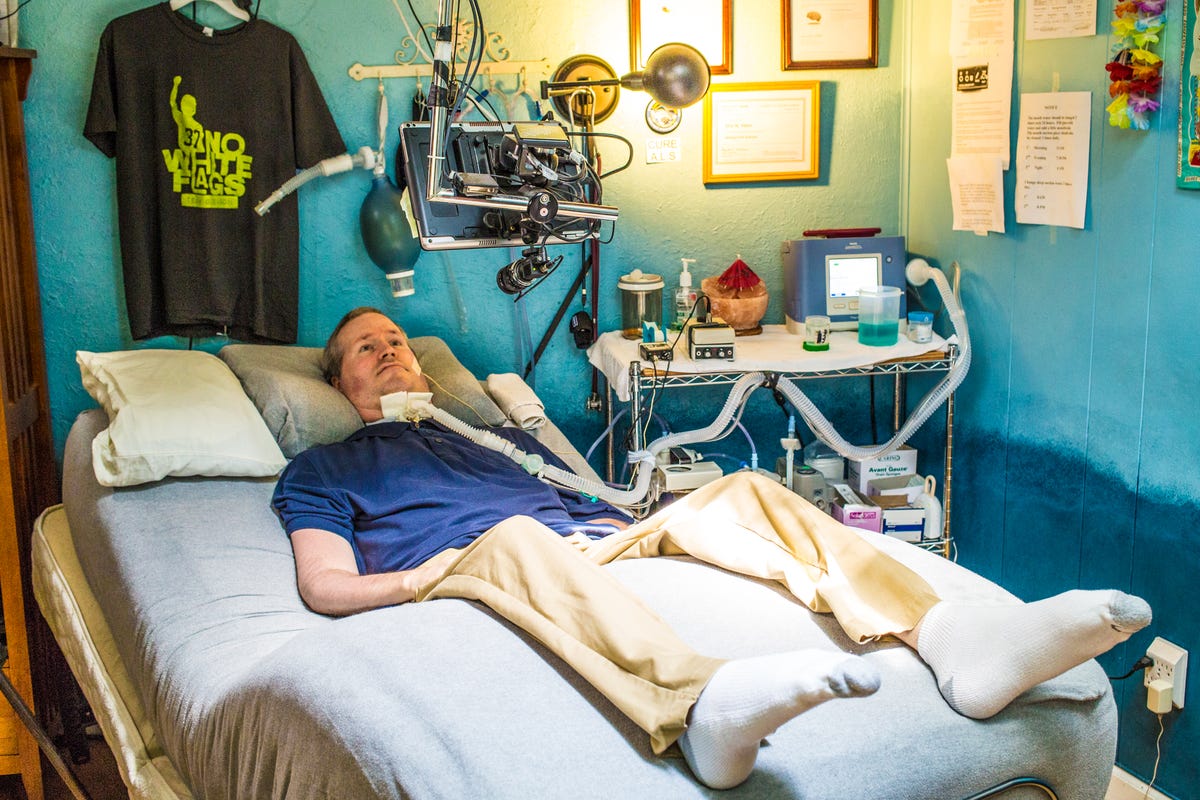
The state of care for ALS
ALS patient Eric Valor in his bed in Aptos, Calif. While his brain remains sharp, he can't carry out most functions on his own since becoming paralyzed by the condition, also known as Lou Gehrig's Disease.
Valor took part in an experimental project this year that successfully used a wireless headset that reads brain waves to allow him to request medical help and control the lights or television simply by thinking commands.
ALS and eye-tracking tech
Using current state-of-the-art eye tracking technology, Valor can "speak" by looking at, and pausing very briefly on, a letter displayed in a matrix on his monitor. This lets him build words and sentences that are then spoken by his computer.
Look to spell and speak
This monitor, mounted above Valor's bed, provides the keyboard and screen with which he can interact.
Emotiv's EEG headset
A wearable headset, along with an app co-developed by Philips and Accenture, processes brain signals to control on/off switches linked to devices such as a television or lights.
Think and do
Demonstrating Emotiv's headset at the Accenture offices in San Jose, Calif.
On/off and dimming lights
Brain commands, simple thoughts calibrated to the specific user, can perform tasks like turning lights on and off and even dimming them.
More freedom from ALS
The brain control EEG technology interface has the power to give ALS patients back some of their freedom, says Eric Valor.
App interface
A view of the Android app co-developed by Philips and Accenture.
EEG sensors
The 14-point contact brain interface reads EEG electrical signals from the brain.
Calibrating the mind
CNET's Kara Tsuboi is fitted with a version of Emotiv's Insight brain-wave-reading headset, a consumer device used for simple games and even flying toy helicopters.
Team Gleason
Valor at his home, where he keeps a T-shirt produced by Team Gleason, an advocacy group created by ALS patient and former NFL player Steve Gleason. It bears the motto "No White Flags."

